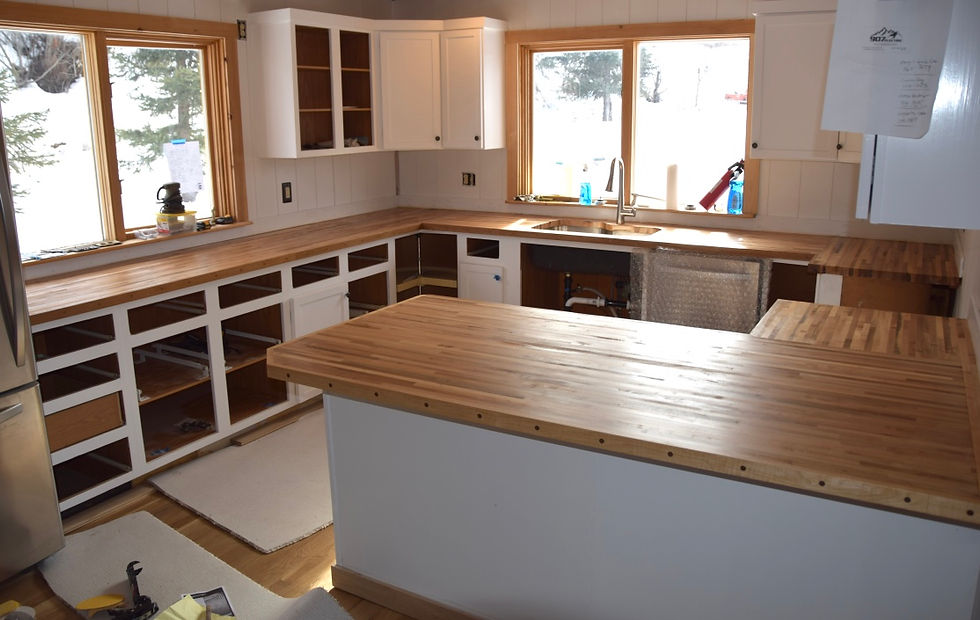Butcher Block Countertops Go In
- Skye Cooley
- Mar 28, 2017
- 2 min read

We ordered 1-1/2" thick maple butcher block slabs from Lumber Liquidators in Seattle. They took a month to get here. Two 96" x 25". One 144" x 25". One 75" x 36".

I added maple edges all around. I filled the counterbored screw holes with contrasting plugs. Then palm sanded to 180 grit.

The cut out for a new undermount stainless steel sink. I reduced the size of the hole on the template by 1/4" so the wood would overhang a small amount. I used a jig saw, a large pattern bit chucked in a router, and a rasp. The key to doing these sink cutouts quickly is to position and trace the template carefully. Next, use a jig saw and new blade to cut cleanly to the line. Then make any adjustments to first 1/4" down from the corner. Run the bearing on a large pattern bit (upper bearing style bit along this corner to square the cut to the countertop surface. Take light passes. Fix any small imperfections with a rasp, then re-rout that portion.

Another brief period of chaos as all the parts settle into place.

Waterlox takes a few coats to build, but the early coats dry quickly. This picture shows the dull, patchy sheen typical of three coats. Temps have been rising into the 30s this week. Glacial ice on the porch, roof, and roads is finally starting to break up.

My winter uniform.

After 7 coats of Waterlox, wet sanding with water and 320 grit between each coat. I will buff out the final coat by hand with a gray Scotchbrite pad to achieve a nice even semigloss sheen. Waterlox is great for countertops (and not much else) because it is so easy to repair and refinish. New coats melt into previous ones flawlessly.


































































































